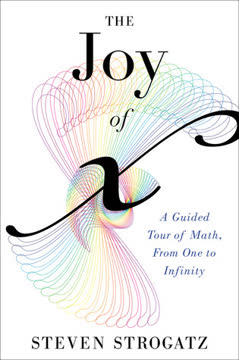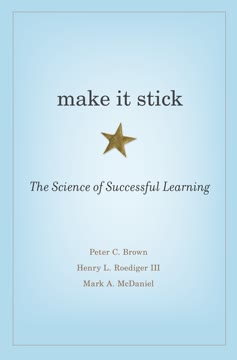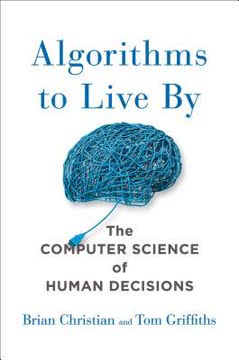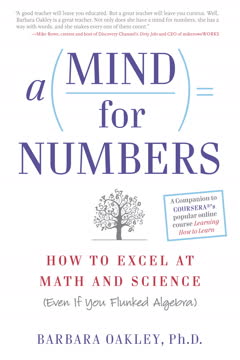가지 주요 요점
1. 집중 모드와 확산 모드: 두 가지 필수적인 사고 패턴
"학습은 뇌의 다양한 영역 간의 복잡한 신경 처리의 깜빡임과 반구 간의 상호작용을 포함합니다."
이중 모드 사고. 뇌는 집중 모드와 확산 모드라는 두 가지 뚜렷한 모드로 작동합니다. 집중 모드는 집중적이고 분석적인 사고를 포함하며, 확산 모드는 더 편안하고 넓은 창의적 연결을 허용합니다.
상호 보완적 역할. 이 두 모드는 문제를 해결하고 새로운 개념을 배우는 데 함께 작용합니다. 집중 모드는 특정 세부 사항을 다루고 단계별 과정을 통해 작업하는 데 필수적입니다. 반면, 확산 모드는 큰 그림을 이해하고 예상치 못한 연결을 만드는 데 도움이 됩니다.
실용적 적용. 두 모드를 효과적으로 활용하려면:
- 집중과 휴식을 번갈아 가며 진행
- 포모도로 기법(25분 집중 작업 후 짧은 휴식)을 사용
- 산책이나 운동과 같은 확산 사고를 촉진하는 활동에 참여
- 문제에서 벗어나 나중에 다시 돌아오는 "아이디어 숙성" 시간을 허용
2. 청킹: 숙달을 위한 신경 패턴 구축
"청크는 의미를 통해 결합된 정보 조각입니다."
신경 효율성. 청킹은 개별 정보 조각을 더 크고 의미 있는 단위로 그룹화하는 과정입니다. 이를 통해 뇌에서 정보의 저장 및 검색이 더 효율적으로 이루어집니다.
청크 구축. 효과적인 청크를 만들려면:
- 청킹하려는 정보에 집중
- 기본 아이디어 이해
- 청크가 큰 그림에 어떻게 맞는지 맥락 파악
- 기억에서 정보를 회상하는 연습
실용적 이점. 청킹은:
- 작업 기억 공간을 확보
- 더 빠른 문제 해결 가능
- 새로운 상황에 지식 전이 촉진
- 주제에 대한 전문성 구축에 도움
3. 미루기: 습관 이해 및 극복
"미루기는 중독과 같습니다. 지루한 현실에서 일시적인 흥분과 안도감을 제공합니다."
근본 원인. 미루기는 종종 다음과 같은 이유에서 비롯됩니다:
- 작업과 관련된 불편함이나 불안
- 시간 관리 기술 부족
- 완벽주의
- 명확한 목표나 우선순위 부족
악순환 끊기. 미루기를 극복하려면:
- 포모도로 기법을 사용하여 작업을 관리 가능한 청크로 나누기
- 일일 할 일 목록 작성 및 우선순위 설정
- 일과를 개발하고 이를 준수
- 작업 완료 후 자신에게 보상
- 자기 연민을 실천하고 부정적인 자기 대화를 피하기
좀비 습관. 미루기는 종종 습관적인 반응임을 인식. 습관의 신호-루틴-보상 주기를 이해함으로써 미루기를 더 생산적인 행동으로 대체하도록 뇌를 재구성할 수 있습니다.
4. 연습과 반복: 신경 연결 강화
"연습은 강력한 신경 패턴, 즉 개념적 청크를 구축하는 데 도움이 됩니다."
의도적인 연습. 효과적인 학습은 특정 약점을 목표로 하는 목적 있는 집중 연습을 요구합니다. 이러한 연습은:
- 현재 능력을 약간 초과하도록 밀어붙임
- 즉각적인 피드백 제공
- 완전한 주의와 노력이 필요
간격 반복. 연습을 한 번에 몰아서 하지 말고 시간을 두고 분산시키기. 이 접근 방식은:
- 신경 연결을 더 효과적으로 강화
- 장기 기억 향상
- 수면 중 정보 통합 허용
능동적 회상. 자료를 수동적으로 검토하는 대신:
- 정기적으로 자신을 테스트
- 개념을 자신의 말로 설명하려고 시도
- 새로운 상황이나 문제에 지식을 적용
5. 기억 기법: 기억력 향상 및 회상
"기억 궁전 기법은 집의 레이아웃과 같은 익숙한 장소를 떠올리고, 기억하고자 하는 개념 이미지를 저장할 수 있는 일종의 시각적 메모장으로 사용하는 것입니다."
시각화의 힘. 뇌는 시각적 및 공간적 기억에 대한 놀라운 능력을 가지고 있습니다. 이 능력을 활용하면 학습과 회상이 크게 향상될 수 있습니다.
효과적인 기법:
- 기억 궁전: 정보를 익숙한 공간의 특정 위치와 연관
- 연상법: 목록이나 개념을 기억하기 위해 두문자어, 운율 또는 구문 생성
- 시각적 은유: 추상적인 아이디어를 나타내는 생생하고 기억에 남는 이미지 생성
- 마인드 맵: 개념 간의 관계를 시각적으로 보여주기 위해 정보를 조직
실용적 적용. 공부할 때:
- 주요 개념의 시각적 표현 생성
- 색상 코딩 및 다이어그램 사용
- 기억 궁전을 정신적으로 "걷는" 연습
- 더 강력한 기억 형성을 위해 여러 감각(시각, 청각, 운동감각) 결합
6. 교차 학습: 더 나은 결과를 위한 학습 혼합
"교차 학습은 다양한 전략을 요구하는 다양한 종류의 문제를 혼합하여 연습하는 것을 의미합니다."
반복을 넘어서. 동일한 유형의 문제를 반복하면 초기 이해를 구축할 수 있지만, 다양한 유형의 문제나 개념을 교차 학습하면 더 깊고 유연한 학습이 이루어집니다.
교차 학습의 이점:
- 문제 유형을 구별하는 능력 향상
- 새로운 상황에 지식 전이 촉진
- 한 가지 문제 유형에서 반복적인 성공으로 인한 능력 착각 방지
- 지식의 실제 적용 모방
실행 전략:
- 학습 세션 내에서 문제 유형 혼합
- 관련 과목(예: 대수학과 기하학) 번갈아 가며 학습
- 새로운 개념과 함께 이전에 배운 자료를 다시 방문
- 각 문제에 적합한 기술을 식별해야 하는 연습 세트 생성
7. 시험 전략: 압박 속에서 성과 극대화
"시험은 단순히 얼마나 알고 있는지를 측정하는 수단이 아닙니다. 시험 자체가 강력한 학습 경험입니다."
시험 준비. 효과적인 전략은 다음을 포함합니다:
- 학습 과정 전반에 걸쳐 정기적으로 자기 테스트
- 연습 중 시험 조건 시뮬레이션
- 연습 시험에서 실수를 검토하고 이해
- 약점에 집중
시험 중:
- "어려운 문제 시작-쉬운 문제로 점프" 기법 사용: 어려운 문제로 시작하되 막히면 쉽게 넘어가기
- 시간을 효과적으로 관리하고 고가치 질문에 더 많은 시간 할당
- 심호흡과 긍정적인 자기 대화를 통해 불안 관리
- 일반적인 실수를 찾기 위해 답변을 두 번 확인
시험 후 학습. 시험 후:
- 실수를 검토하고 이해
- 미래 학습을 안내하기 위해 오류 패턴 식별
- 최종 점수와 관계없이 성공과 진전을 축하
8. 고난의 가치: 학습에서 도전 수용
"실수는 불가피합니다. 이를 극복하려면 과제를 일찍 시작하고, 정말로 즐기지 않는 한 작업 세션을 짧게 유지하십시오."
생산적인 실패. 어려운 개념이나 문제와 씨름하는 것은 학습 과정의 자연스럽고 필수적인 부분입니다. 이는:
- 더 강력한 신경 연결 구축
- 문제 해결 능력 향상
- 인내심과 회복력 개발
성장 마인드셋. 도전을 능력에 대한 위협이 아닌 성장의 기회로 받아들이십시오. 이 마인드셋은:
- 노력과 지속성을 장려
- 실패에 대한 두려움 감소
- 학습에 대한 사랑 촉진
생산적인 고난을 위한 전략:
- 어려움을 겪을 시간을 허용하기 위해 과제를 일찍 시작
- 스스로 문제를 시도하기 전에 정말 막히면 도움 요청
- 결과뿐만 아니라 학습 과정을 반영
- 진행 상황과 작은 승리를 축하
9. 수면과 운동: 효과적인 학습의 필수 요소
"수면은 사람들이 어려운 문제를 해결하고 배우고 있는 것에서 의미와 이해를 찾는 능력에 놀라운 차이를 만듭니다."
학습에서 수면의 역할:
- 기억을 통합하고 신경 연결을 강화
- 깨어 있는 동안 축적된 독소를 뇌에서 제거
- 확산 모드 사고를 통해 문제 해결 능력 향상
운동의 이점:
- 뇌로의 혈류 증가로 인한 인지 기능 향상
- 새로운 뉴런(신경 생성)의 성장 촉진
- 스트레스 감소 및 기분 개선으로 학습 능력 향상
실용적 팁:
- 일관되고 질 좋은 수면을 우선시(대부분의 성인은 7-9시간)
- 규칙적으로 운동, 짧은 활동도 유익
- 문제 해결을 향상시키기 위해 수면 전에 어려운 자료 검토
- 걷기와 같은 가벼운 운동 중 "능동적 회상" 고려
10. 은유와 유추: 이해를 위한 강력한 도구
"은유와 물리적 유추는 매우 다른 영역의 아이디어가 서로 영향을 미칠 수 있도록 하는 청크를 형성합니다."
인지적 다리. 은유와 유추는 새로운 추상적 개념을 익숙한 구체적 아이디어와 연결합니다. 이 과정은:
- 복잡한 주제 이해 촉진
- 기억력과 회상력 향상
- 창의적 문제 해결 촉진
효과적인 은유 만들기:
- 이해하려는 개념의 주요 측면 식별
- 유사한 특성을 가진 익숙한 객체나 프로세스 찾기
- 익숙한 것과 새로운 것 사이의 명확한 연결 만들기
과학에서의 예:
- 파이프를 통해 흐르는 물로서의 전기
- 단백질을 만드는 청사진으로서의 DNA
- 원자 구조의 모델로서의 태양계
실용적 적용. 새로운 개념을 배울 때:
- 적극적으로 은유와 유추를 찾거나 만들기
- 동료와 이러한 비교를 논의하고 개선
- 연결을 강화하기 위해 시각적 표현 사용
- 모든 은유나 유추의 한계를 인식
마지막 업데이트 날짜:
FAQ
What's A Mind for Numbers about?
- Focus on Learning Techniques: A Mind for Numbers by Barbara Oakley explores effective strategies for mastering math and science, emphasizing the importance of understanding how the brain learns.
- Cognitive Science Insights: The book delves into cognitive science, explaining how focused and diffuse modes of thinking affect problem-solving and creativity.
- Practical Applications: Oakley provides practical advice and techniques, such as chunking and retrieval practice, to help students overcome challenges in math and science.
Why should I read A Mind for Numbers?
- Overcome Math Anxiety: The book offers strategies to build confidence and improve skills in math and science, making it ideal for both enthusiasts and those who fear these subjects.
- Empowerment Through Knowledge: It empowers readers by teaching effective learning methods, making the process more enjoyable and less stressful.
- Research-Based Techniques: Oakley’s methods are grounded in cognitive science, providing evidence-based strategies for better academic performance.
What are the key takeaways of A Mind for Numbers?
- Two Modes of Thinking: Understanding focused and diffuse thinking is crucial for effective learning, with focused thinking being analytical and diffuse thinking allowing for creative insights.
- Chunking Information: The book emphasizes chunking, which involves grouping information into manageable units to enhance memory and understanding.
- Retrieval Practice: Engaging in self-testing and retrieval practice is more effective than passive studying methods, strengthening memory and understanding.
How does A Mind for Numbers define focused and diffuse thinking?
- Focused Thinking: This is the concentrated, analytical mode used for problem-solving and understanding specific concepts.
- Diffuse Thinking: A more relaxed, creative mode that allows for broader connections and insights, often activated when the mind is at rest.
- Balancing Both Modes: Oakley emphasizes the importance of alternating between these modes to enhance problem-solving abilities and foster creativity.
What are some effective study techniques from A Mind for Numbers?
- Pomodoro Technique: Involves working in focused bursts followed by short breaks, helping maintain concentration and reduce burnout.
- Memory Palace Technique: Uses visualization to associate information with specific locations, enhancing recall by tapping into spatial memory.
- Active Recall: Actively recalling information strengthens neural connections and improves retention, achievable through self-quizzing or teaching others.
How does A Mind for Numbers address procrastination?
- Understanding Procrastination: Oakley explains that procrastination often stems from discomfort with a task, and recognizing this can help develop strategies to overcome it.
- Habit Formation: Discusses how habits can be harnessed to create productive routines by identifying cues and rewards.
- Practical Strategies: Techniques like the Pomodoro method and setting specific goals encourage focused work sessions and manageable task lists.
What is the significance of chunking in A Mind for Numbers?
- Definition of Chunking: Chunking is the process of grouping information into larger, meaningful units, making it easier to remember and understand complex concepts.
- Building Expertise: Creating a library of chunks improves problem-solving skills and intuition in math and science, allowing for quicker recall during tests.
- Steps to Chunking: Oakley outlines steps for effective chunking, including working through problems, taking breaks, and revisiting material to reinforce understanding.
What are some effective memory techniques mentioned in A Mind for Numbers?
- Chunking Information: Breaking down complex information into smaller, manageable pieces allows the brain to process and remember information more efficiently.
- Spaced Repetition: Reviewing material at increasing intervals helps reinforce memory and prevents forgetting, making it a powerful tool for long-term retention.
- Visual Imagery: Using visual metaphors and stories enhances memory by creating vivid mental images, aiding in the recall of information.
What are some common misconceptions about learning math and science discussed in A Mind for Numbers?
- Illusions of Competence: Many students believe they understand material simply by rereading it, but true understanding requires active engagement and recall.
- Fixed Mindset: The book challenges the notion that some people are inherently "bad at math," arguing that skills can be improved with the right techniques and mindset.
- Overemphasis on Memorization: While memorization is important, understanding concepts is crucial for applying knowledge effectively, focusing on comprehension rather than rote memorization.
What are the best quotes from A Mind for Numbers and what do they mean?
- “Being good at science and mathematics isn’t just something you are; it’s something you become.”: Highlights that skills in math and science can be developed through practice and effective learning strategies.
- “The Law of Serendipity: Lady Luck favors the one who tries.”: Emphasizes the importance of effort and persistence in learning, increasing the likelihood of success and unexpected discoveries.
- “Procrastination is the death of success.”: Underscores the detrimental effects of procrastination on academic performance, serving as a reminder to take control of one’s habits to achieve goals.
How can I apply the concepts from A Mind for Numbers to my studies?
- Implement Study Techniques: Use techniques like the Pomodoro method and active recall in study sessions to stay focused and improve retention.
- Create a Chunked Library: Build a library of chunks as you learn new concepts, enhancing problem-solving abilities and making studying more efficient.
- Reflect on Your Learning: Regularly assess understanding and adjust study habits as needed, using insights from the book to create a personalized learning strategy.
What is the significance of Santiago Ramón y Cajal in A Mind for Numbers?
- Neuroscience Pioneer: Cajal is recognized as the father of modern neuroscience, illustrating the importance of persistence and adaptability in learning.
- Learning from Failure: His journey highlights that even those who struggle can achieve greatness through hard work and dedication, serving as inspiration for learners.
- Creativity in Science: Oakley emphasizes Cajal’s creative approach, showing that imagination and curiosity are vital components of learning, with his ability to visualize complex concepts being a key lesson.
리뷰
A Mind for Numbers는 수학, 과학 및 기타 과목을 효과적으로 학습하는 데 유용한 실용적인 조언으로 찬사를 받고 있다. 독자들은 학습 기법, 뇌 기능, 그리고 공부 습관에 대한 명확한 설명을 높이 평가한다. 많은 이들이 이 지식을 더 일찍 알았더라면 좋았을 것이라고 말한다. 이 책은 학생, 전문가, 그리고 학습 능력을 향상시키고자 하는 모든 사람들에게 가치 있는 책으로 여겨진다. 일부는 책이 너무 일반적이거나 반복적이라고 비판하지만, 대부분은 이 책이 통찰력 있고 수학과 과학을 넘어 다양한 분야에 적용 가능하다고 생각한다.
Similar Books

















